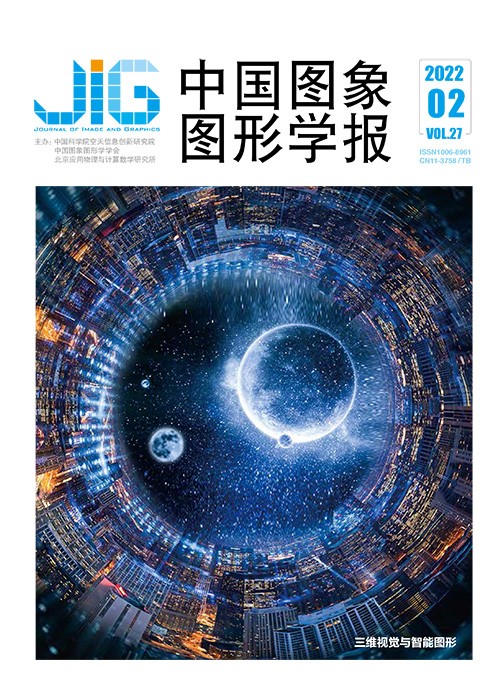
多源融合SLAM的现状与挑战
摘 要
同时定位与地图构建(simultaneous localization and mapping,SLAM)技术在过去几十年中取得了惊人的进步,并在现实生活中实现了大规模的应用。由于精度和鲁棒性的不足,以及场景的复杂性,使用单一传感器(如相机、激光雷达)的SLAM系统往往无法适应目标需求,故研究者们逐步探索并改进多源融合的SLAM解决方案。本文从3个层面回顾总结该领域的现有方法:1)多传感器融合(由两种及以上传感器组成的混合系统,如相机、激光雷达和惯性测量单元,可分为松耦合、紧耦合);2)多特征基元融合(点、线、面、其他高维几何特征等与直接法相结合);3)多维度信息融合(几何、语义、物理信息和深度神经网络的推理信息等相融合)。惯性测量单元和视觉、激光雷达的融合可以解决视觉里程计的漂移和尺度丢失问题,提高系统在非结构化或退化场景中的鲁棒性。此外,不同几何特征基元的融合,可以大大减少有效约束的程度,并可为自主导航任务提供更多的有用信息。另外,数据驱动下的基于深度学习的策略为SLAM系统开辟了新的道路。监督学习、无监督学习和混合监督学习等逐渐应用于SLAM系统的各个模块,如相对姿势估计、地图表示、闭环检测和后端优化等。学习方法与传统方法的结合将是提升SLAM系统性能的有效途径。本文分别对上述多源融合SLAM方法进行分析归纳,并指出其面临的挑战及未来发展方向。
关键词
Review of multi-source fusion SLAM: current status and challenges
Wang Jinke, Zuo Xingxing, Zhao Xiangrui, Lyu Jiajun, Liu Yong(Zhejiang University, Hangzhou 310027, China) Abstract
Simultaneous localization and mapping (SLAM) technology is widely used in mobile robot applications, and it focuses on the robot's motion state estimation issue and reconstructing the environment model (map) at the same time. The SLAM science community has promoted the technique to be deployed in various applications in real life nowadays, such as virtual reality, augmented reality, autonomous driving, service robots, etc. In complicated scenarios, SLAM systems empowered with single sensor such as a camera or light detection and ranging(LiDAR) often fail to customize the targeted applications due to the deficiency of accuracy and robustness. Current research analyses have gradually improved SLAM solutions based on multi-sensors, multiple feature primitives, and the integration of multi-dimensional information. This research reviews current methods in the multi-source fusion SLAM realm at three scales:multi-sensor fusion (hybrid system with two or more kinds of sensors such as camera, LiDAR and inertial measurement unit (IMU), and combination methods can be divided into two categories(the loosely-coupled and the tightly-coupled), multi-feature-primitive fusion (point, line, plane, other high-dimensional geometric features, and the featureless direct-based method) and multi-dimensional information fusion (geometric information, semantic information, physical information, and inferred information from deep neural networks). The challenges and future research of multi-source fusion SLAM has been predicted as well. Multi-source fusion systems can implement accurate and robust state estimation and mapping, which can meet the requirements in a wider variety of applications. For instance, the fusion of vision and inertial sensors can illustrate the drift and scale missing issue of visual odometry, while the fusion of LiDAR and inertial measurement unit can improve the system's robustness, especially in unstructured or degraded scenes. The fusion of other sensors, such as sonar, radar and GPS(global positioning system) can extend the applicability further. In addition, the fusion of diverse geometric feature primitives such as feature points, lines, curves, planes, curved surfaces, cubes, and featureless direct-based methods can greatly deduct the degree of valid constraints, which is of great importance for state estimation systems. The reconstructed environmental map with multiple feature primitives is informative in autonomous navigation tasks. Furthermore, data-driven deep-learning-based synthesized analysis in the context of probabilistic model-based methods paves a new path to overcome the challenges of the initial SLAM systems. The learning-based methods (supervised learning, unsupervised learning, and hybrid supervised learning) are gradually applied to various modules of the SLAM system, including relative pose regression, map representation, loop closure detection, and unrolled back-end optimization, etc. Learning-based methods will benefit the performance of SLAM more with more cutting-edge research to fill the gap amongst networks and various original methods. This demonstration is shown as following:1) The analysis of funder mental mechanisms of multi-sensor fusion and current multi-sensor fusion methods are illustrated; 2) Multi-feature primitive fusion and multi-dimensional information fusion are demonstrated; 3) The current difficulties and challenges of multi-source fusion towards SLAM have been issued; 4) The executive summary has been implemented at the end.
Keywords
simultaneous localization and mapping(SLAM) multi-source fusion multi-sensor fusion multi-feature fusion multi-dimension information fusion
|



 中国图象图形学报 │ 京ICP备05080539号-4 │ 本系统由
中国图象图形学报 │ 京ICP备05080539号-4 │ 本系统由